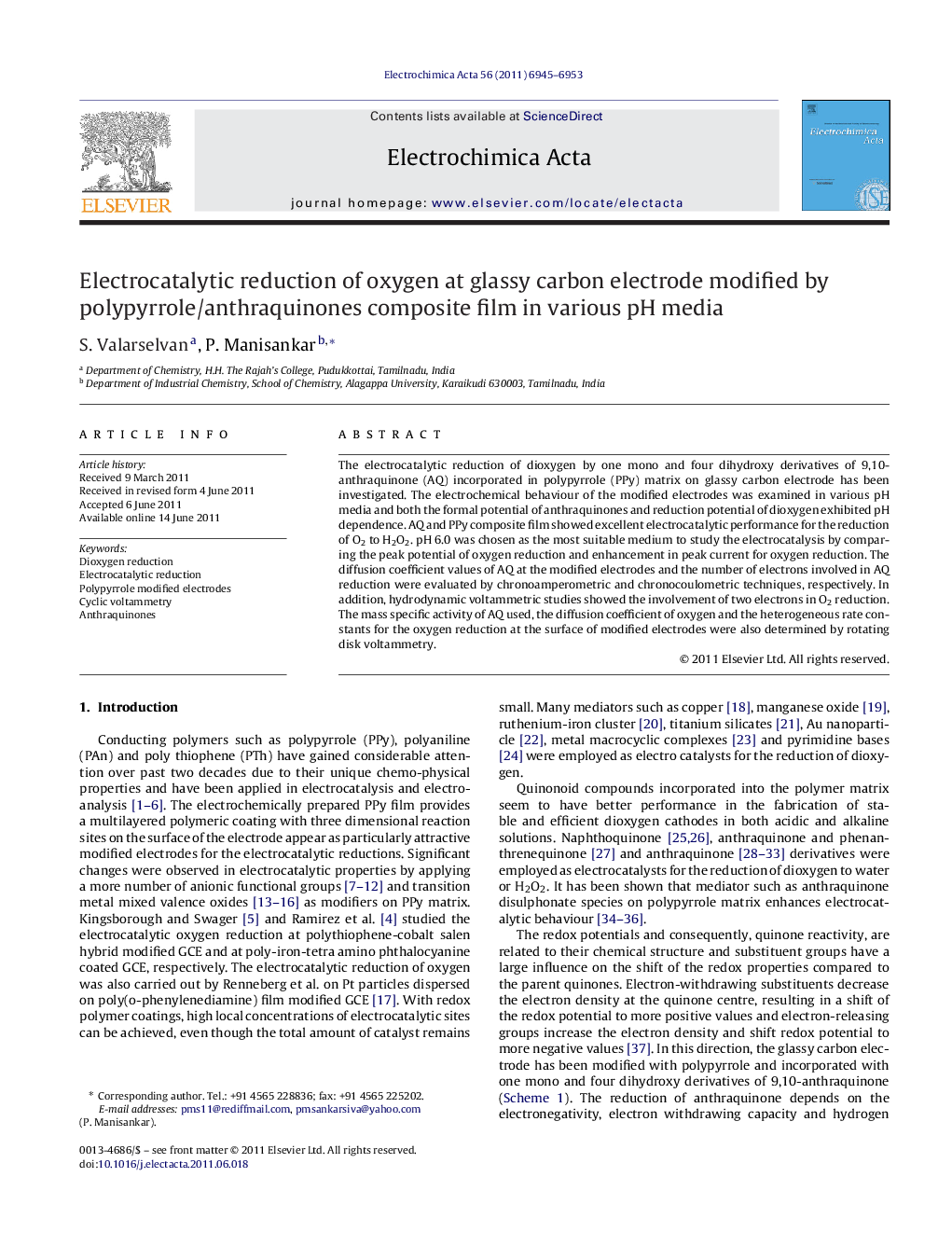| Article ID | Journal | Published Year | Pages | File Type |
|---|---|---|---|---|
| 191018 | Electrochimica Acta | 2011 | 9 Pages |
The electrocatalytic reduction of dioxygen by one mono and four dihydroxy derivatives of 9,10-anthraquinone (AQ) incorporated in polypyrrole (PPy) matrix on glassy carbon electrode has been investigated. The electrochemical behaviour of the modified electrodes was examined in various pH media and both the formal potential of anthraquinones and reduction potential of dioxygen exhibited pH dependence. AQ and PPy composite film showed excellent electrocatalytic performance for the reduction of O2 to H2O2. pH 6.0 was chosen as the most suitable medium to study the electrocatalysis by comparing the peak potential of oxygen reduction and enhancement in peak current for oxygen reduction. The diffusion coefficient values of AQ at the modified electrodes and the number of electrons involved in AQ reduction were evaluated by chronoamperometric and chronocoulometric techniques, respectively. In addition, hydrodynamic voltammetric studies showed the involvement of two electrons in O2 reduction. The mass specific activity of AQ used, the diffusion coefficient of oxygen and the heterogeneous rate constants for the oxygen reduction at the surface of modified electrodes were also determined by rotating disk voltammetry.
Graphical abstractThe electrocatalytic reduction of dioxygen by one mono and four dihydroxy derivatives of 9,10-anthraquinone (AQ) incorporated in polypyrrole (PPy) matrix on glassy carbon electrode has been investigated. AQ and PPy composite film showed excellent electrocatalytic performance for the reduction of O2 to H2O2.Figure optionsDownload full-size imageDownload as PowerPoint slideHighlights► Hydroxyl derivatives of anthraquinones as electrocatalysts for dioxygen reduction. ► AQ/PPy composite film on GC electrode exhibits potent electrocatalytic activity. ► Substituent groups influence electrocatalytic dioxygen reduction. ► Surface coverage varies the rate of electrocatalytic dioxygen reduction.
